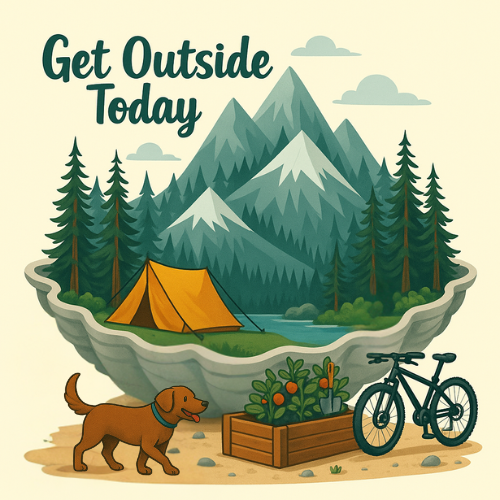
The Ultimate Checklist: What Dog and Cat Owners Need
The Ultimate Checklist: What Dog and Cat Owners Need
Whether you’re welcoming a goofy puppy, a dignified senior dog, a curious kitten, or a chill adult cat, this guide covers the real‑world essentials—what to buy, how to set up your home, and smart routines that make life easier for both of you.
Quick-Start Shopping Lists
For All Pets
- Collar (breakaway for cats; flat/rolled for dogs) with ID tag and your phone number
- Microchip registration confirmed with current contact info
- Sturdy carrier or vehicle‑safe crate/harness for transport
- Two bowls (food + water), non‑tip and easy to sanitize
- Complete, balanced food for life stage + measuring scoop
- Comfortable bed and a quiet “retreat” spot
- Grooming basics: brush/comb, nail trimmer, pet toothpaste
- Enzyme cleaner for accidents and pet‑safe surface cleaner
- First‑aid basics (see checklist below)
Dog‑Specific
- Front‑clip or Y‑shaped harness
- 6‑ft leash (avoid retractables for beginners)
- Training treats and a treat pouch
- Chews matched to your dog’s chewing style
- Crate or exercise pen; baby gates for management
- Puzzle feeders and a snuffle mat
Cat‑Specific
- Litter boxes (rule of thumb: one per cat + one extra)
- Unscented clumping litter, scoop, and litter mat
- Scratching options: one tall vertical post and one horizontal
- Perches/window beds and covered hideouts
- Interactive toys (wand toys) and solo toys (balls, kickers)
- Fountain or wide bowls to keep whiskers comfortable
Budget tip: Start with essentials that impact safety, health, and routine. You can add “nice‑to‑haves” once you know your pet’s preferences.
Home Setup & Safety
Pet‑Proofing Basics
- Secure cords, toxic plants, medicines, and cleaning products
- Store trash and small objects (rubber bands, hair ties) out of reach
- Use baby gates or a pen to create a calm “landing zone”
Identification
- Fit collar correctly (two‑finger rule for dogs; snug breakaway for cats)
- Verify microchip number and register with up‑to‑date contacts
Bathrooms & Dining
- Cats: Place boxes in quiet, low‑traffic areas; boxes should be as long as your cat from nose to base of tail
- Dogs: Pick a consistent outdoor potty spot; schedule frequent breaks for puppies and new rescues
- Set feeding station on a wipeable mat; wash bowls daily
Nutrition & Treats
- Choose a complete diet labeled for your pet’s life stage (puppy/kitten, adult, senior)
- Transition foods gradually over 5–7 days to prevent stomach upset
- Measure meals; ask your vet for an appropriate daily calorie range
- Treats should be under ~10% of daily calories; pick soft, pea‑sized rewards for training
- Fresh water at all times; many cats drink more from a fountain
Health, Vet Care & First Aid
Vet Essentials
- Wellness exam within the first week to review vaccines and history
- Parasite prevention plan: fleas, ticks, heartworm (dogs), intestinal parasites
- Discuss spay/neuter timing, dental care, and baseline labs
- Behavior questions are medical, too—ask early for the best results
DIY First‑Aid Kit
- Gauze pads/roll, non‑stick pads, self‑adhesive wrap
- Blunt‑tip scissors, tweezers, digital thermometer (pet‑safe)
- Saline eye wash; chlorhexidine solution/wipes for minor skin cleaning
- Styptic powder (nail nicks), disposable gloves
- List of emergency contacts: primary vet, 24/7 ER, poison control
Important: Only induce vomiting for dogs under direct vet guidance. Never use hydrogen peroxide for cats.
Financial planning: Consider pet insurance when your pet is young or set aside an emergency fund to handle unexpected care.
Grooming & Home Care
- Brush type matters: slicker for long coats; curry/rubber brush for short coats
- Trim nails every 2–4 weeks; pair handling with treats to build comfort
- Dental hygiene: pet toothpaste and brush or dental wipes, aiming for daily
- Keep an enzyme cleaner ready to neutralize odors and prevent re‑marking
Training, Play & Enrichment
Dogs
- Leash skills with a non‑retractable 6‑ft leash and a well‑fitted harness
- Short, frequent training bursts (1–3 minutes) using high‑value rewards
- Rotate chews and puzzle toys to prevent boredom
- Crate/place training for downtime and house‑training consistency
Cats
- Daily interactive play (wand toys), ending with a small meal to satisfy the “hunt” cycle
- Offer both vertical and horizontal scratchers near favorite resting spots
- Food puzzles or scatter feeding to engage natural foraging instincts
- Provide perches with views and cozy hides to reduce stress
Travel & Transport
- Cats: Use a hard‑sided or well‑ventilated soft carrier large enough for turning around; leave it out at home with blankets and treats
- Dogs: Choose a crash‑tested crate or car harness; secure in the back seat
- Pack a “go bag”: water, collapsible bowl, spare leash, waste bags, wipes, small towel, medications, copies of records
Your First‑Week Plan
- Day 0–1: Set up a quiet base area; introduce family slowly; keep the schedule calm
- Day 1–3: Establish feeding times, potty/litter routines, and short play/training sessions
- Day 3–7: Gradually expand access to the home; confirm ID and microchip; schedule or complete vet visit
Nice‑to‑Haves Once You’ve Settled
- Water fountain (especially for cats) and slow‑feeder bowls (fast‑eating dogs)
- Pet camera for check‑ins and enrichment ideas
- Cooling mat or heated bed depending on climate and breed
- Training clicker, place mat (dogs), additional window perches (cats)
Early Hurdles & Quick Fixes
- Low appetite: Warm the food slightly, try a quiet feeding area, or add a small topper; contact your vet if it persists
- Litter misses (cats): Add another box, scoop daily, switch to unscented litter, and ensure boxes are large and uncovered
- House‑training (dogs): Predictable schedule, frequent outdoor trips, reward immediately after success; supervise or confine between trips
- Over‑energy: Increase mental exercise with puzzles, scent games, or extra short training reps
